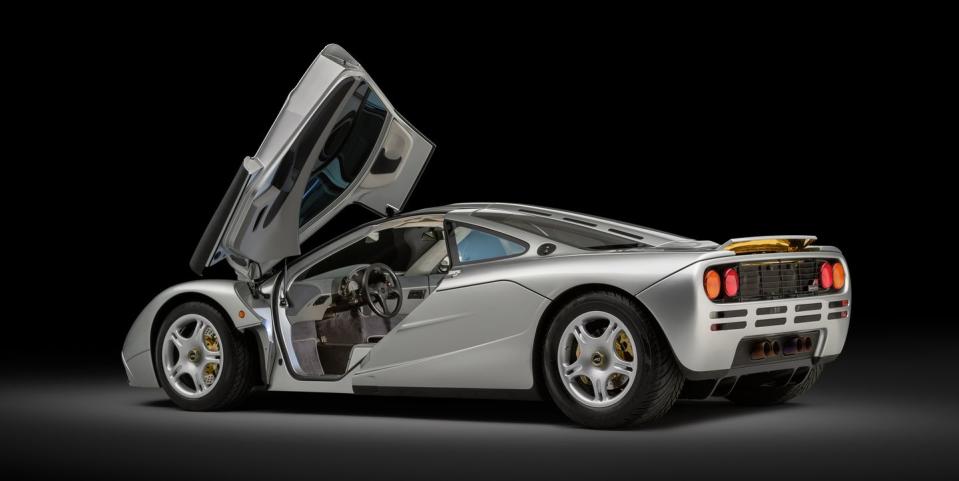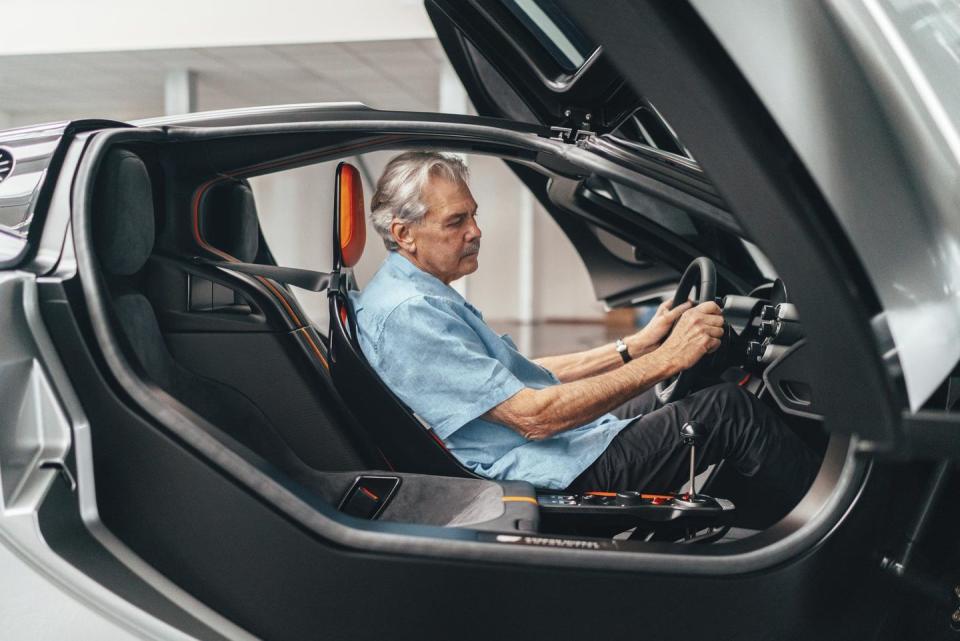What Made the McLaren F1 Unlike Any Other Car

You can't talk about Gordon Murray's new supercar, the T.50, without talking about his last one—the McLaren F1. When I spoke to Murray about the T.50 last month, before we got into the nitty gritty, we talked about the F1, and why nothing else lives up.
"I really expected Ferrari to bounce back," Murray says. "We kind of stole their crown." Murray's a fan of the Ferrari F40—a "fantastically fun motorcar to drive"—but he expected that brand would put up a stronger fight with the F50. Though the F50 was cool, it wasn't a match for the F1. "They played heavily on Formula 1 technology, carbon tub, engine mounted directly to the bulkhead, and all that sort of stuff," he says "But what they didn't do was produce something that was small, lightweight, drivable, and everyday usable like the F1 was."
Murray says the next real attempt came from Porsche, with the Carrera GT, but he criticizes that car for being relatively heavy, and too stiff for daily driving. He's convinced that Ferrari and Porsche couldn't match the F1 because of the fundamental nature of those companies.
"Working for a bigger company, inevitably, you have bosses to keep happy and you have committees and you have board members to keep happy. And in some cases, shareholders to keep happy," he says. "Inevitably, those efforts get watered down, even if you had the right idea in the first place."
With the F1, Murray had the advantage of working for a small company, and bosses who gave him freedom to build the car he wanted. McLaren chief Ron Dennis and major shareholder Mansour Ojeh just let Murray do his thing.

Murray started work on the F1 a little over 30 years ago, and in the intervening decades, cars have changed dramatically. "We've gradually drifted into accepting that the average new supercar will be a minimum of 3300 pounds," he says. And while these modern supercars generate amazing performance figures, they're not all that pure. Murray wants something more like a Sixties Lotus Elan, a longtime benchmark for the designer. "When I jump back in that, it always makes me smile, you know?"
"We slowly over the last 30 years, have grown into accepting that these monsters are the new norm," he continues. With the T.50 he wants to challenge our complacency. It's the same sort of challenger spirit—the belief that Ferrari and the likes could be beaten—that defined the F1.
Murray considers himself lucky. Not only because he was able to make the McLaren F1, but because he's able to create a follow-up. "In the world of today that is full of all these supercars from small manufacturers and big manufacturers, there's supercars everywhere," he says. "We have to pinch ourselves every day when we look at what we're doing. There's nobody on the planet, no other manufacturer on the planet, that's doing anything that even comes close. It's remarkable."
You Might Also Like

 Yahoo Autos
Yahoo Autos 